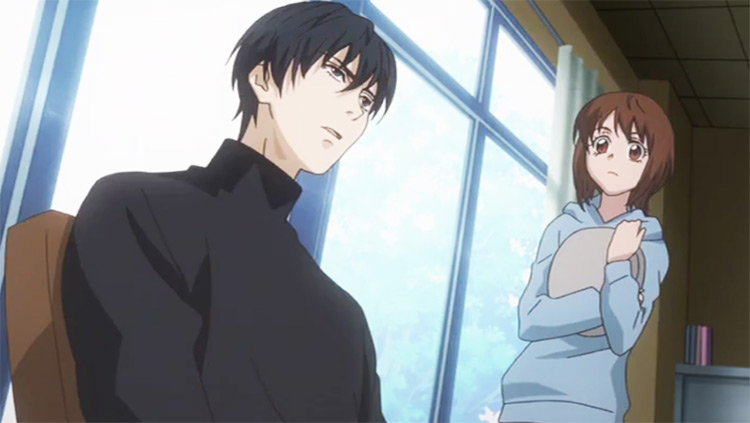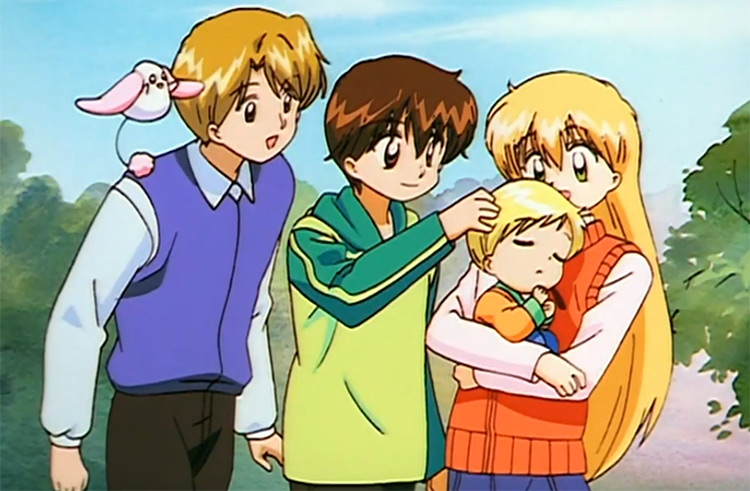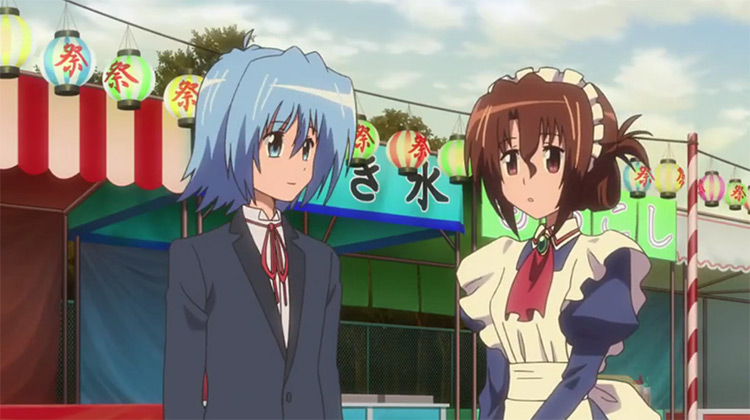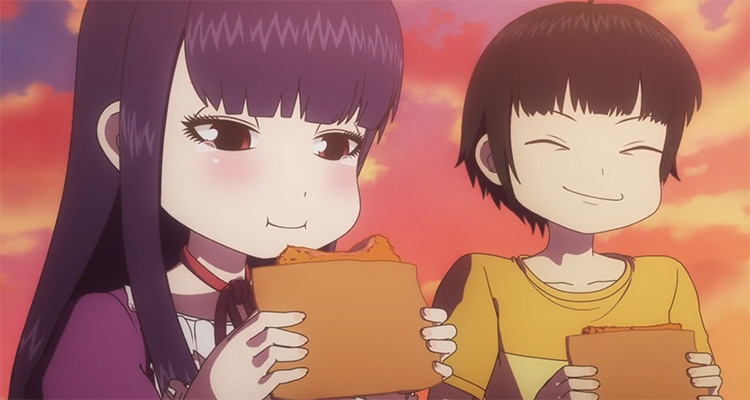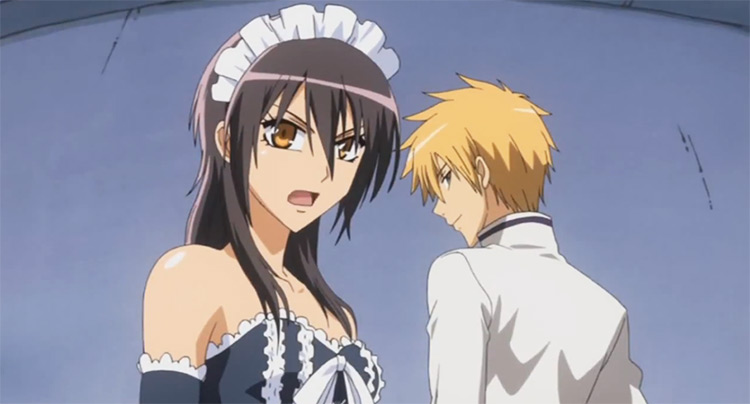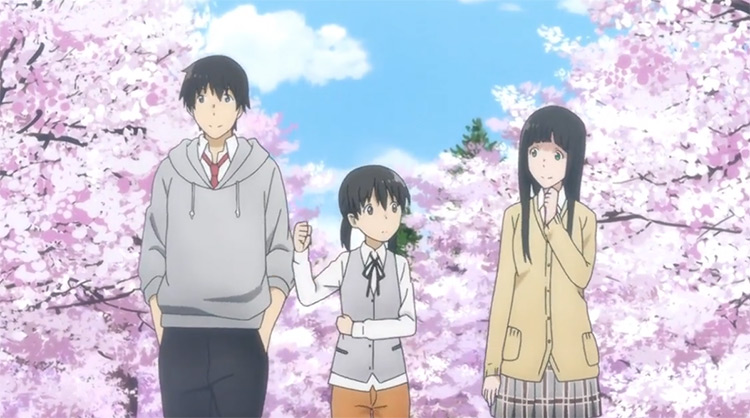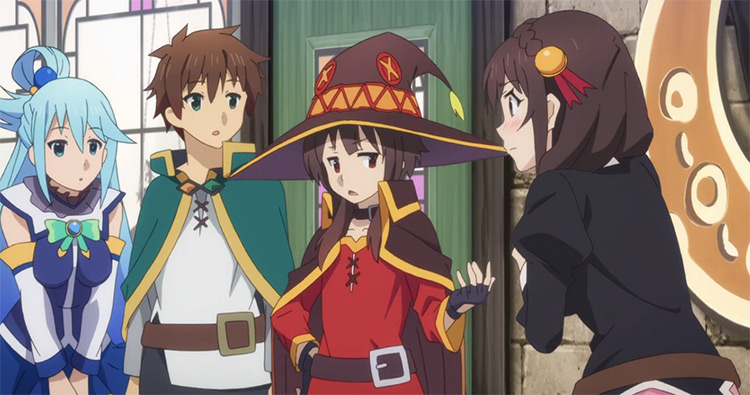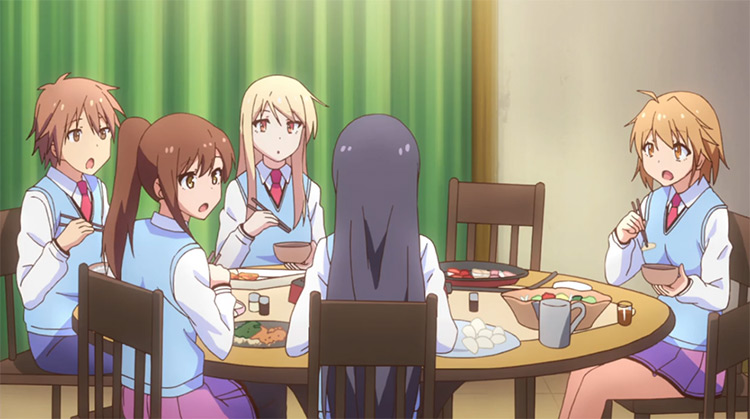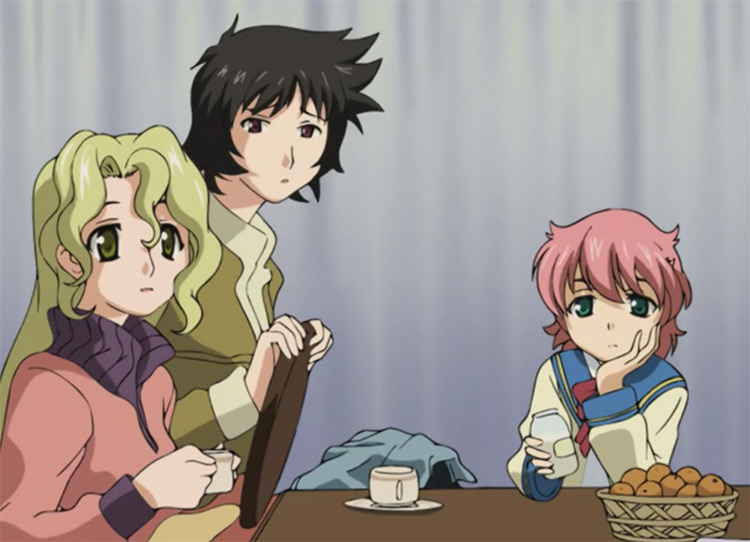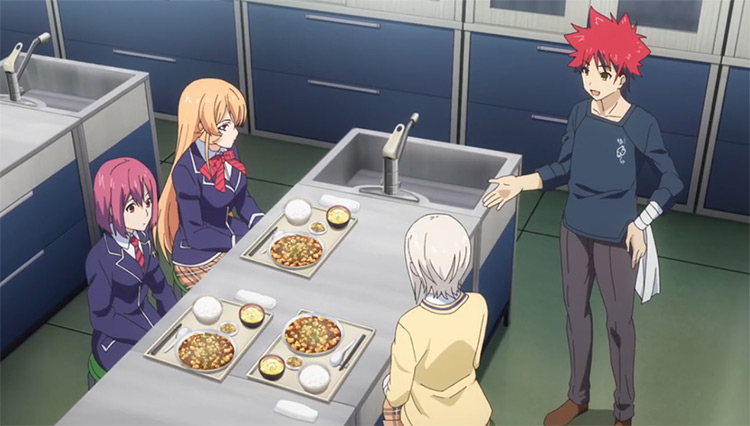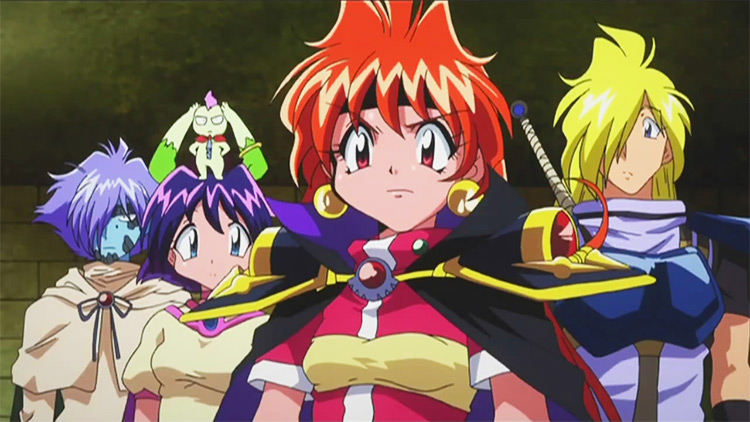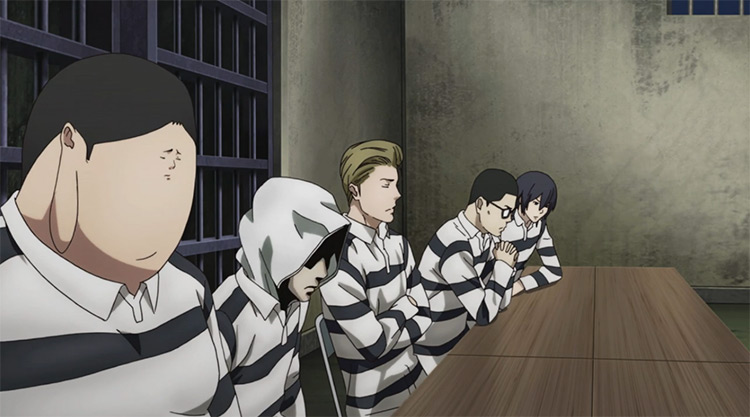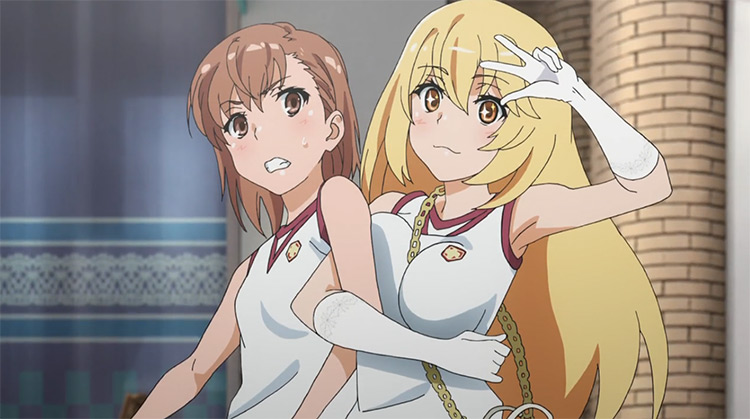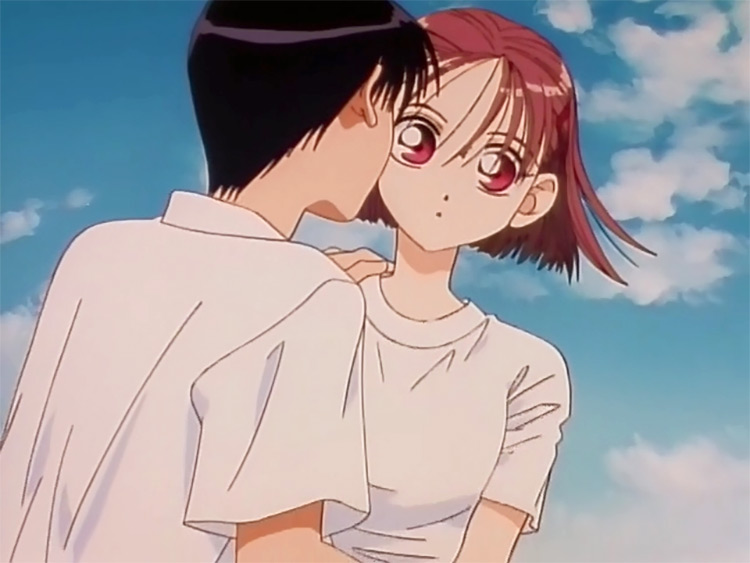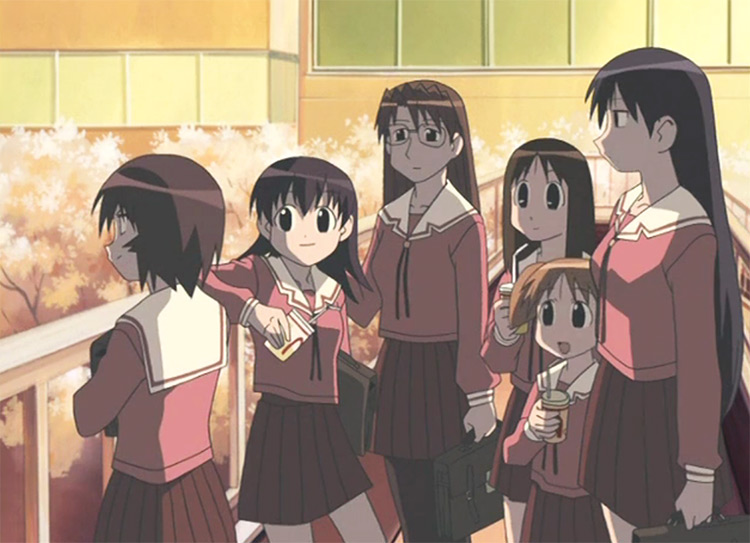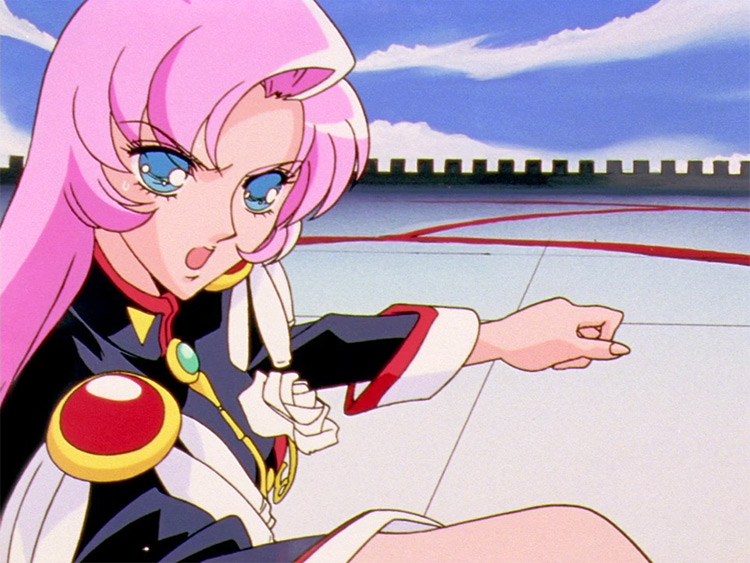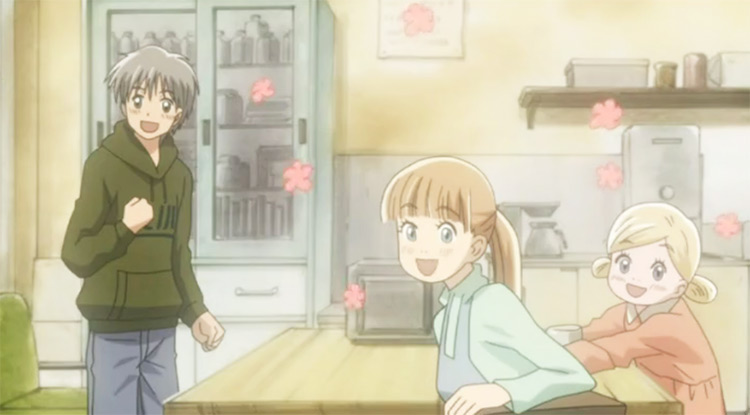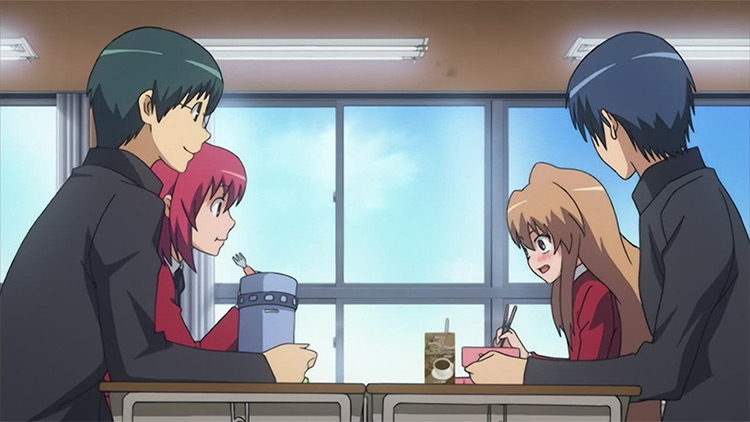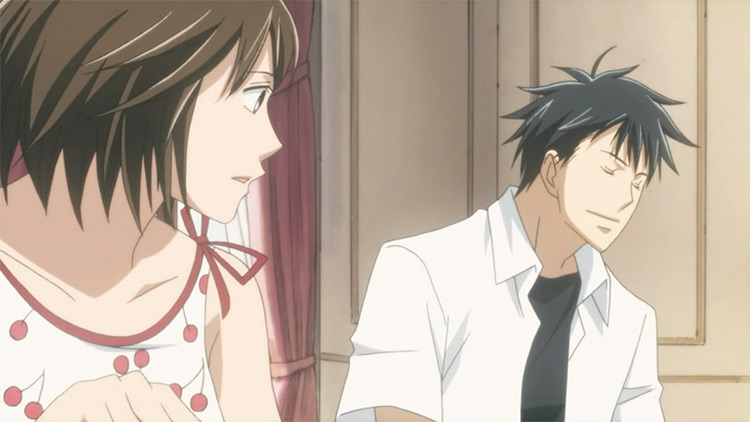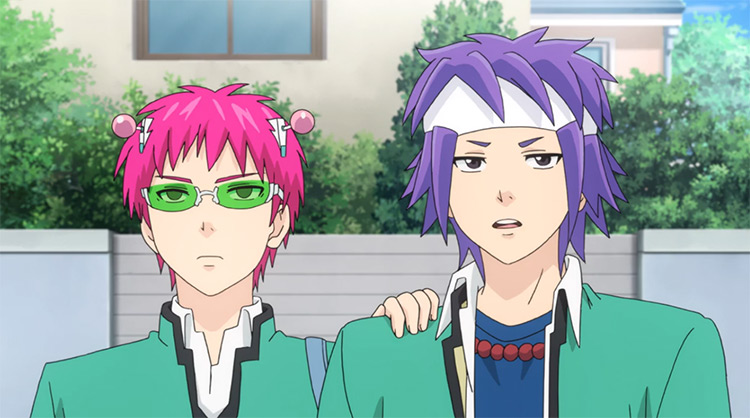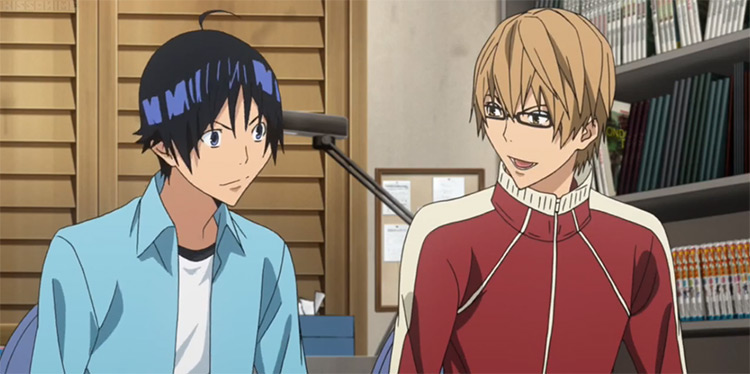A quick look at its entire catalog proves that they’ve contributed excellent shows and movies throughout the 30+ years of JC’s history. But what is the best JC Staff anime? Is it from the 2010s, 2000s, or the tail-end of the 20th century? Without further ado, I’m honored to present my favorite JC Staff anime of all time, ranking & reviewing some of the best series they’ve put out.
22. Ghost Hunt
I’m one of the firm believers that anime has yet to master the art of horror. You can point to Shiki and Higurashi When They Cry, but even those two titles aren’t universally acclaimed series. Ghost Hunt isn’t focused on terrifying. And that’s a good thing: both for the viewer and the production staff that either didn’t have the budget or the technical prowess to amplify the frights. Instead, the 25-episode Ghost Hunt pays more attention to how people find ghosts (hence, the title). It dives into a bit of Japanese culture, religion, and has enough twists to keep you watching at least a few cases. Yes, I think Mai (and Kazuya) are annoying. But I’ve yet to see a paranormal anime quite like this.
21. Daa! Daa! Daa! (UFO Baby)
It feels so long since I saw UFO Baby. But my childhood was all the better because of its 78-episode run. As the title implies, the show involves a baby. His name is Ruu — and I would die for him. Even the two teens, Kanata and Miyu (who are not related by blood), feel the same way. Nothing catastrophic or significantly eventful happens throughout most of the show. That’s not its focus. UFO Baby spends most of its time putting the three (plus a cat-like alien named Wannyaa) in humorous and silly situations. In other words, it’s all about having fun and seeing them develop their relationships. Somehow, an alien baby and his neko-ish babysitter got two foster parents in the form of two teenagers (who are living alone together because both their parents are overseas), reminding everyone that people unrelated by blood can be part of a loving family.
20. Hayate no Gotoku!! (Hayate the Combat Butler)
Hate the Combat Butler is one of the most successful franchises from JC Staff. And it manages to be such a charming, funny, and non-cringeworthy harem series. The original had a run of 52 episodes, and a few sequel series, an OVA, and a movie followed over the years (although the last three projects were no longer handled by JC Staff). Hayate is an inspiring and adorable young MC. Look, he had a terrible childhood: He had a lazy father (i.e. refused to find a proper job) and a mom addicted to gambling. Hayate had to work so many jobs at a young age to help his parents — and they didn’t even change their bad ways. His parents even sold him to pay off their debt. Thus, I love that Hayate is in a better position now. Thanks to his previous work experience, he’s an excellent butler to Nagi Sanzenin. He’s a tremendously good fighter too, and you can’t say the same for other assistants.
19. High Score Girl
This is a recent series that’s set in a time that not many may no longer remember: 1991. Premiering in July 2018, High Score Girl is a love letter to arcade games, and fighting games like Street Fighter 2 in particular. It features three kids who get to meet and develop endearing relationships with each other because of video games. Haruo Yaguchi and Akira Oono were the first to be passionate (and skilled) video gamers, but Koharu Hidaka eventually discovers the joy of playing as well. Yet High Score Girl isn’t just about video games: It’s about finding amazing people in your life through a shared interest. The trio doesn’t stay the same (the sequel takes place five years later), and the series gives viewers a peek into their personalities and individual struggles. This is surprisingly endearing, and it’s a coming-of-age romance that also celebrates video games when they weren’t as accepted and popular today.
18. Kimi to Boku. (You and Me.)
Yes, I’m a big fan of CGDCT (Cute Girls Doing Cute Things) shows. But You and Me. reminded me that you don’t always need a group of kawaii girls to elevate a slice-of-life series. This series is about five friends in high school. Four of the guys (Shun, Kaname, and the twins Yuuta and Yuuki) have been friends since kindergarten — and they soon become friendly with transfer student Chizuru Tachibana. Together the guys go about their daily life, having random silly moments that you’ll appreciate even if you personally didn’t experience them. The art style is soothing, and the same goes for its soundtrack. Did I mention it has cats? Adorable, playful cats? It’s just one more reason to watch this wholesome series about lifelong friendships among well-developed characters.
17. Kaichou wa Maid-sama! (Maid Sama!)
JC Staff handled this adaptation well. One look at its art style screams “shoujo”, and you’re not going to see anything new: You have a tsundere female MC, an appealing male MC, and a male childhood friend who’s deeply in love with the girl. Still, Maid Sama! knows exactly what to do with these established tropes in comedy and romance series. It can make your heart aflutter, giving you the lighthearted (and cheesy) moments associated with young romance. Also, it’s true: The hardworking female MC who just wants women to feel safer and treated equally at school (that was once an all-boys school) works at a maid cafe — and she’s great at it.
16. Flying Witch
The world is so much more exciting with Flying Witch around (and yes, the MC is an actual witch who can fly). I knew I was going to love the series just from the previews. Its color palette is muted, which works to calm my senses and welcome me to a world of nature, daily walks, food, and other good things in life. If you’re having a bad day, check out Flying Witch. Nothing terrible happens here. No unnecessary drama or conflict whatsoever. Whatever happens in each episode feels natural. And it doesn’t rely on slapstick comedy to make you laugh (not that it’s a bad thing to use slapstick comedy!) Flying Witch revels in ordinary things that make life worth living, that people sometimes ignore because of their busy lives, and you’ll surely appreciate the characters. For once, they all speak and behave like real humans.
15. Kono Subarashii Sekai ni Shukufuku wo!: Kurenai Densetsu (KonoSuba Movie)
Studio Deen was responsible for the first two seasons of KonoSuba, which became a certified hit (at least outside Japan), with the main cast all being associated with widely popular memes. But even if JC Staff only handled the film, that’s already enough for it to be my favorite movie of theirs. Imagine all the wacky antics that happened in the two seasons of KonoSuba — but with a bigger budget. Yes, Legend of Crimson has the finest Megumin explosions, which makes sense because it’s about the place where she grew up. You’ll have the same outrageous character interactions (and plot resolutions) you’ve come to expect from KonoSuba, just with a cinematic style.
14. Sakura-sou no Pet na Kanojo (The Pet Girl of Sakurasou)
Admittedly, I’m still not a fan of Mashiro Shiina to this day. But whenever the anime didn’t focus on her and her fanservice panty shots, it shines. Unlike other shows, The Pet Girl of Sakurasou has six main characters: Mashiro, Nanami, Sorata, Misaki, Jin, and Ryuunoseke. The ensemble cast was a risky idea, but it worked. Their distinct personalities and dynamics contribute to Sakura Dormitory being one-of-a-kind, separating it from the forgettable and basic dorms in anime. I personally admire Nanami for her perseverance, and I also find Ryuunosuke adorable (and I thought he was just going to be an edgy genius guy). The pacing is solid, and the art style, music, and animation are all above average. It has drama (especially between Jin and Misaki), humor, and elements of love, friendship, and the joy and pains of realizing your passion.
13. R.O.D: The TV (Read or Die TV)
Similar to KonoSuba, the first Read or Die project wasn’t from JC Staff — Studio Deen took care of the three-episode OVA. But don’t skip the OVA. You’ll enjoy the two-season series more if you watch that first. With that out of the way, Read or Die is an early 2000s anime featuring women with an unusual power: They can turn paper (a lot of it) into pretty much anything, from sharp weapons to defensive equipment and massive vehicles. How cool is that? When a ton of anime shows back then focused on generic magical beams and lasers, R.O.D: The TV gave the spotlight to paper manipulation. Even if it’s old, its action scenes (and various fighting styles) remain distinctive.
12. Shokugeki no Souma (Food Wars! Shokugeki no Soma)
The last two seasons of Food Wars failed to reach the heights and consistent fun that earlier episodes (and arcs) had. But that doesn’t mean you shouldn’t give this cooking battle shounen a chance. Aside from something like Koufuku Graffiti and Cooking Master Boy, this is an anime you’d enjoy while having a meal. If you’re eating anything, you’ll probably crave for something while you’re watching Food Wars. The way it presents meals and how the tasters react (often in a ridiculously ecchi, fanservice-y manner) keeps me wondering how the food actually tastes like.
11. Slayers Try
The Slayers franchise has gone through a lot of studio changes. It started with E&G Films (and there’s a 2001 film by Hal Film Maker) before JC Staff took over for Slayers Try, Slayers Revolution, and Slayers Evolution-R. But here’s the thing: JC Staff was already part of an earlier project, which was Slayers Next. They weren’t the studio adapting it, but they were one of its producers. Anyway, I love Slayers. And I’m grateful that JC Staff took the reins to extend its lifespan. Featuring an old art style, its world of swordsmen, demons, sorcerers, and Lina Inverse (who became a DotA hero) takes me back to a beloved period of anime, of a childhood spent being enthralled by magic, adventure, and high fantasy.
10. Prison School
I binged Prison School many years ago. And I think it’s a perfect adaptation. I wasn’t aware of the manga, so I didn’t know what to expect — but I ended up praising the series. If the first 1-3 episodes don’t hook you in, then it may not be for you. But if you find yourself laughing at the crazy situations Takehito, Kiyoshi, Jouji, Reiji, and Shingo are in at the start, I implore you to finish the entire show. It’s ecchi, but character design makes Prison School funnier, especially when you see how they behave. I think Hana Midorikawa is a best girl contender. And I vividly remember her infamous moments with Kiyoshi. Also, just take a look at Reiji Andou’s face. It’s hard evidence that comedy is embedded in Prison School’s DNA.
9. Toaru Kagaku no Railgun (A Certain Scientific Railgun)
You can start with the parent story A Certain Magical Index (also from JC staff), which has three seasons all in all. You can even do it the other way around since the chronological order starts with Railgun — although some events happen at the same time. So what is this about? Well, it stars Mikoto Misaka (think of Pikachu but as a female human) who’s one of the strongest espers in Academy City, home to a multitude of fellow espers of varying abilities and power levels. But don’t think it’s all about high-octane, electrifying (get it?) action. Some fans of Index actually dislike Railgun, thinking it’s mere filler and fanservice. Yet A Certain Scientific Railgun is a unique blend. Its slice-of-life and serious no-chill moments may feel unbalanced or lack sufficient transitions from one to the other, but I honestly have no major qualms.
8. Kareshi Kanojo no Jijou (His and Her Circumstances)
Karekano came out in 1998 — and it’s still one of the most effective romantic comedies in anime, even if it supposedly had significant budget constraints by the end. Is it memorable because of its Gainax and JC Staff collaboration? The classic OP that brings me back to a simpler time? That Hideaki Anno (the man responsible for Neon Genesis Evangelion) was its director? I can’t point out which aspect gives it an edge over other similar shows. All I know is that Yukino Miyazawa and Souichirou Arima, the two most popular and intelligent students in their school, complement one another. Their chemistry is undeniable. To this day, it’s so refreshing that Kare Kano didn’t stick to all the shoujo romance tropes of people being too shy to confess — or having their confession sabotaged by fireworks. Kare Kano has its own eccentric journey toward young love. And I just can’t praise it enough for having characters that resonate with me, because you understand why they react and behave in certain ways.
7. Azumanga Daioh (Azumanga Daioh: The Animation)
Before anime and CGDCT reached the global popularity they enjoy now, there was Azumanga Daioh. Like The Pet Girl of Sakurasou, this JC Staff series from 2002 has an ensemble cast — but it’s not just five main characters. This has eight MCs. Somehow, it didn’t crumble in terms of character development and pacing. Everyone from Ayumu to Yukari and Chiyo gets enough of the spotlight to prove they’re not mere caricatures. As much as this is a classic slice-of-life show, it goes beyond showing the value of ordinary things in life by highlighting its characters’ personal issues and motivations. Thus by the end of the series, you feel that they’ve grown up. That while some things remain the same, they are also one step closer to reaching their goals.
6. Shoujo Kakumei Utena (Revolutionary Girl Utena)
A Kunihiko Ikuhara is different from your typical anime show. Think of it as watching something from a filmmaker like Wes Anderson, Quentin Tarantino, or Christopher Nolan. The aforementioned directors can take on a variety of stories and genres, but their works always have something that viewers distinctly associate with them. In the case of Revolutionary Girl Utena, Ikuhara presents a show where the MC Utena Tenjou strives to become a prince, even though she’s a woman. From here, the viewer is taken into a world brimming with symbolism — and it’s brave. I even think that it was way ahead of its time in terms of the sociopolitical and gender issues it tackles. It’s a coming-of-age story with themes that remain as relevant as ever. From how it presents women and how it challenges societal perceptions of women, to how it looks at growing up and ultimately examines and subverts the magical girl genre, Revolutionary Girl Utena has courage and wit you rarely see at this artistic level.
5. Hachimitsu to Clover (Honey and Clover)
By now you’ve probably realized that I love when anime shows have a relatively large main cast, and yet manage to develop them all and make them feel like real human beings with complex personalities and ever-changing trajectories in life. As such, Honey and Clover (make sure to watch the second season) presents five young people studying in art school. Yuuta Takemoto lives in an apartment with two seniors (and one needs a wake-up call if he wants to graduate). Soon, they develop friendships (and perhaps romantic feelings) with the lovely Hagumi Hanamoto and Ayumi Yamada. Yet it’s not all about happy feelings. Honey and Clover feels so relatable, especially if you’re in college or having a quarter-life crisis. Because its characters are at an important crossroads of determining where they want their life to lead. Filled with just enough (and sensible) drama, this coming-of-age romantic comedy is a JC Staff classic.
4. Toradora!
Toradora is easily one of the most popular JC Staff anime — and its MC Taiga Asaka is undoubtedly an iconic tsundere. But what makes this special? Isn’t it just another school-based teen rom-com? Well, its premise revolves around Taiga and the male MC Ryuuji Takasu helping each other get together with one another’s best friend. Taiga likes Yuusaku Kitamura while Ryuuji likes Minori Kushieda. The characters may seem generic at first. But the character development here is top-tier — and this goes for the two best friends and Ami Kawashima. Yes, it reaches a point of drama. But it would be a complete lie if I said it was unearned and ineffective. Once things get a little more serious and emotional, you become captivated not only by the characters but also by the outstanding voice acting. Taiga is feisty but nevertheless precious.
3. Nodame Cantabile
How about a romance series that doesn’t have high school teenagers as its main characters? How about a show with a plethora of classical music in the foreground and background? Nodame Cantabile having three seasons feels like a miracle when other adaptations (with a more general target market) get cut off after one season, or have most of its manga volumes lumped into 12 episodes. This stars two university students, Megumi Noda and Shinichi Chiaki, with the latter already in his fourth year of college during the first season of the series. Megumi and Shinichi are highly skilled musicians. But their personalities aren’t similar. For example, the guy is nice but also likes everything to be perfect, he won’t stop until he’s done it exactly as he wants. Likewise, Shinichi already knows what he wants while Megumi is still figuring out her career path. Along the way the two form a refreshingly mature romantic relationship, giving additional emotional depth to all the music they play together.
2. Saiki Kusuo no Sai-nan (The Disastrous Life of Saiki K.)
The Disastrous Life of Saiki K. shouldn’t be as effective as it is — but it is. I honestly don’t understand. Before I decided to watch it, I wasn’t impressed with the art style and animation floating around in online anime forums. Yet it’s like the second season of KonoSuba: Somehow, its seemingly average or lackluster style and animation make everything so much funnier. The source material itself helps elevate the series to become one of the finest comedies of the past decade. But you have to applaud how JC Staff adapted this. The voice acting is simply phenomenal — as if the voice actors were born for these eccentric roles. Even the mere act of Kurumi (Saiki’s mom) speaking so fast while maintaining a charmingly feminine voice is enough to make me laugh. Similarly, the placement of music, from suspenseful to romantic, adds to the humor. You already know that a certain instrumental will play when a character appears, yet it’s still hilarious. Saiki Kusuo no Psi Nan also feels like Gintama because it often breaks the fourth wall and has parodies of anime tropes. I love this show so much, and I can see it becoming one of the top anime comedies of all time as more people are introduced to this instant classic.
1. Bakuman.
Here it is, my all-time favorite JC Staff anime, which is about two guys working to achieve their dreams of becoming the best mangaka (manga artists) in Japan. Did you know that the Bakuman manga was written and illustrated, respectively, by Tsugumi Ohba and Takeshi Obata… the same guys who did Death Note? When I learned that, it felt like the series was a love letter to their passion and hard work they’d put out to be where they are now. Bakuman is a shounen series, and it manages to be more engaging and suspenseful than other shounen titles that feature huge fantasy/supernatural battles. How? A lot of things, honestly. Bakuman takes in time in developing its characters, including the new rivals and supporting characters. Once you’re done with the third season, you’ll be in awe of how individual lives and relationships have changed, all in a realistic manner. Moritaka Mashiro and Akito Takagi are a perfect duo, and everyone should have their kind of friendship. They stick together through the ups and downs, going through all the laughter, craziness, and frustration, conquering their insecurities and limits to become who they’ve always wanted to be.
